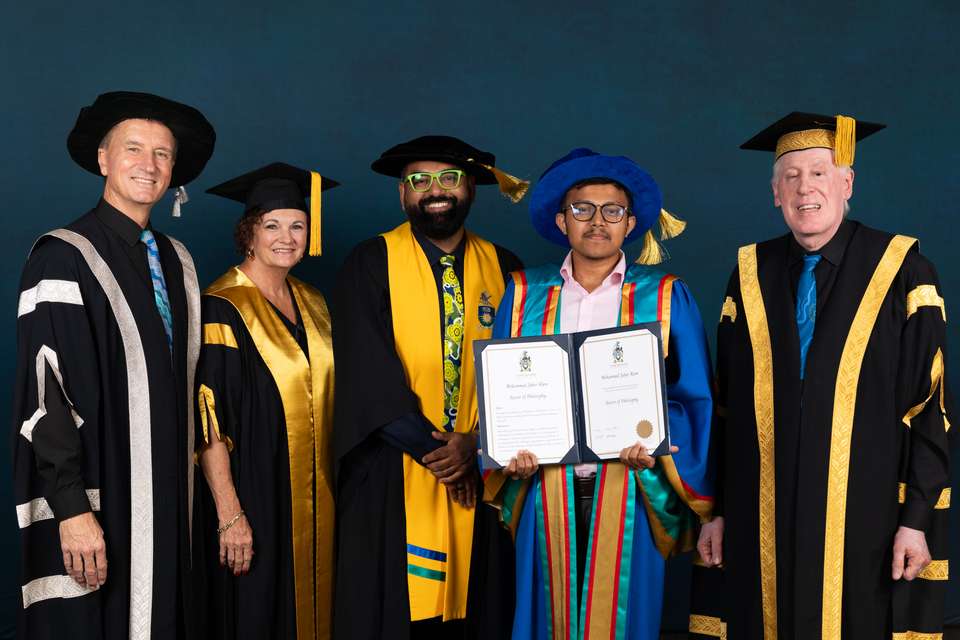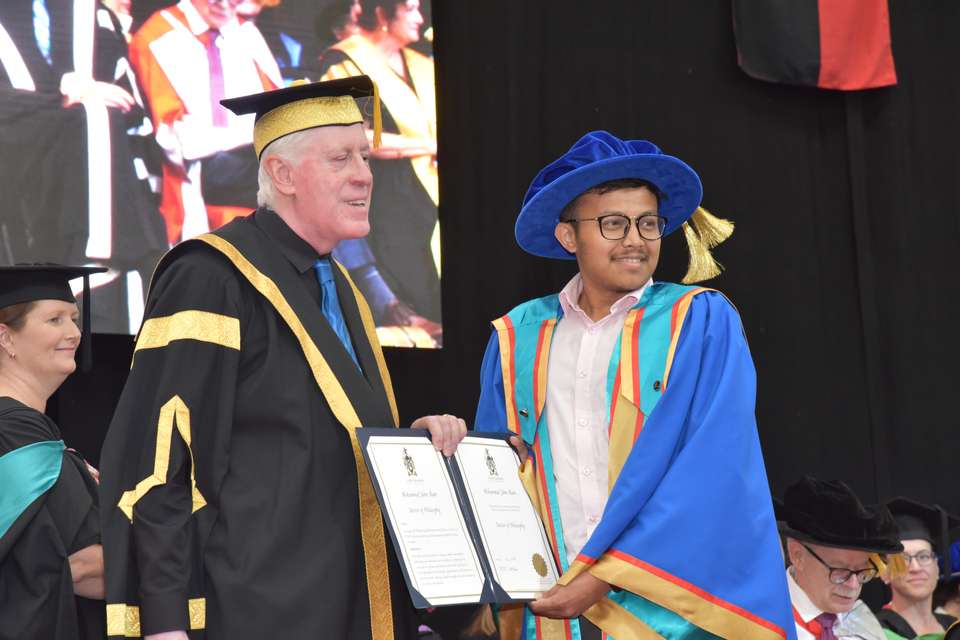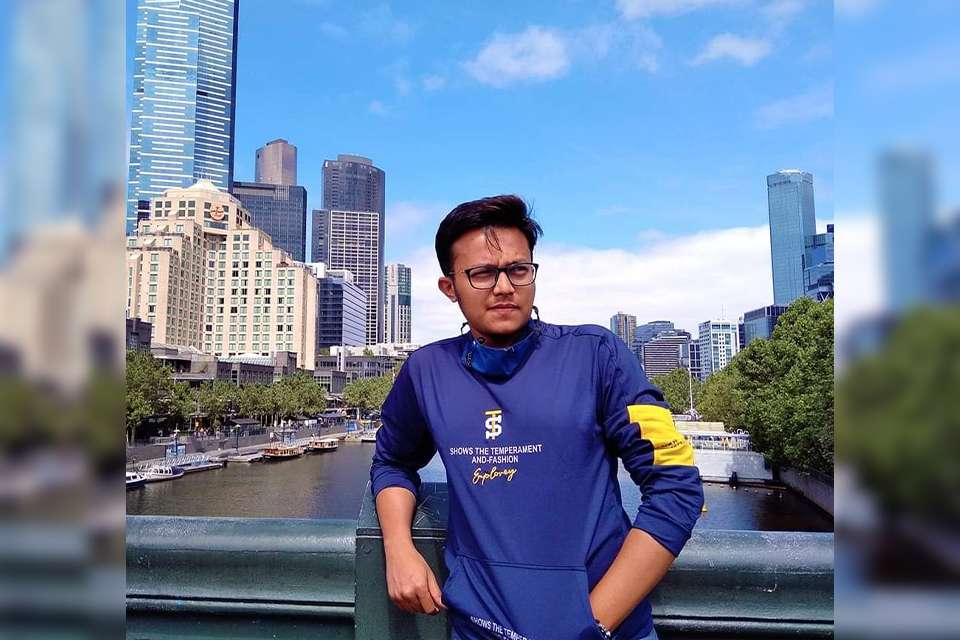
Dropped calls, loss of signal and lag – we’ve all experienced the frustrations of poor mobile phone connectivity. But one CQUniversity PhD graduate has found practical solutions to better manage mobile networks in our increasingly hyperconnected world.
In late 2020, Dr Mohammed Jaber Alam was set to travel abroad to Australia to undertake his PhD in Rockhampton, after successfully being awarded a Commonwealth RTP Scholarship and International Excellence Award from CQUniversity.
Having completed his Master of Engineering Science by Research in 2020 from Multimedia University in Malaysia, his career progression seemed to be falling into place, however the plot twist that was COVID-19 threatened to thwart Jaber’s dream, with travel restrictions and border closures resulting in the expiry of his hard-earned scholarship.
Miraculously, with an unexpected exemption letter from the Australian Border Force to allow him to enter the country a year later, and an approved request from CQU for a scholarship extension, Jaber finally arrived in Australia in early December 2021.
However, the challenge he then faced was to complete his PhD in record time, having lost 10 of the stipulated 36 months.
But time saw the determined research student excel, publishing several Scopus-indexed Q1 and Q2 publications within the stipulated time of his scholarship and received the conferral of his PhD in November 2024.

Now Jaber said he cannot wait to see his research adapted to provide real-world applicable solutions for consumers.
“My research focuses on making mobile networks faster, more reliable, and less congested – so that users experience fewer dropped calls, smoother video streaming, and better internet connectivity, especially in crowded areas,” Jaber said.
Jaber said that one of the biggest challenges in mobile networks today is managing traffic load and interference.
“When too many people try to connect to the same network tower, it gets overloaded, causing slow speeds and poor signal quality. Similarly, when multiple towers operate too close to each other, their signals can interfere, leading to connectivity issues.”
Having identified the main issues impacting mobile users and analysing real-world data, Jaber’s study looked at how mobile networks can balance traffic more efficiently and reduce interference through several key findings including smart traffic distribution, self-optimising networks and adjusting signal strength.
“In terms of smart traffic distribution, imagine a city with multiple roads: if one road is jammed, traffic is redirected to less busy routes. Similarly, mobile networks can use AI-powered systems to move users to less congested towers, ensuring a better connection,” Jaber explained.
“I also found that sometimes mobile towers will send signals too far, overlapping with other towers and causing interference. By adjusting signal strength based on real-time traffic, networks can reduce this problem and maintain high-quality connections.”

Jaber’s research also studied cell tower communication and distribution, identifying a gap to create better communication between towers, along with increasing the addition of smaller cell towers in more congested areas.
“Mobile towers can ‘talk’ to each other and coordinate their signals, reducing interference and improving overall performance,” Jaber said.
“This ensures that signals don’t overlap too much and cause disruptions. Along with this, adding small additional towers (called small cells) in busy places like stadiums, train stations, and shopping malls, will help spread the load, preventing congestion on the main network.
“Future networks will have the ability to adjust themselves automatically based on traffic and demand (called self-optimising networks) – kind of like self-driving cars making real-time decisions!”
But until that point, as the technological world adapts and advances and the number of devices connected to mobile networks increases, Jaber said that these discoveries in improving network efficiency are crucial in shaping the next generation of mobile networks – not only to bridge the ‘digital divide’ in remote and urban areas but also to power the future of ‘smart technology’.
“As we move further into the 5G era and beyond, networks must handle massive amounts of data, millions of connected devices, and ever-increasing user demands,” Jaber said.
“Whether it’s self-driving cars, smart cities, or the Internet of Things (IoT), mobile networks need to support billions of connected devices in real time. The improvements I’m working on will make this transition smoother and more reliable.”
And for the everyday user, these network improvements will see smooth video calls, uninterrupted browsing with faster mobile data speeds, fewer dropped calls and connection issues with stronger and more reliable signals, along with more energy-efficient networks resulting in longer battery life for mobile devices.
“By addressing key challenges like network congestion and interference, my work contributes to creating smarter, more efficient mobile networks to keep up with demand and ensuring that we stay connected effortlessly, no matter where we are or how many devices we use.”
Currently still based in Rockhampton and primarily focused on teaching as an academic casual with CQUniversity, Jaber is eager to pursue post-doctoral research to continue with his contributions to this field.
“The journey to this point was challenging yet incredibly rewarding, filled with moments of intense learning and personal growth,” Jaber said.
“Achieving this milestone, I believe has not only strengthened my expertise in telecommunications engineering but also opened new doors for academic and professional opportunities.”
To learn more about Research Higher Degrees with CQUniversity, please visit the RHD webpage.

CQUniversity Australia is a trading name of Central Queensland University
ABN: 39 181 103 288
RTO Code: 40939
CRICOS: 00219C
TEQSA: PRV12073